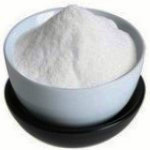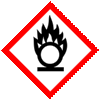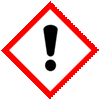 |
King of Chemicals Manufacturers |
Specifications, Properties, Uses, SDS of Sodium Nitrate FCC Food Grade Manufacturer Supplier Exporter Wholesale & Small Packs, CAS Number 7631-99-4. |
|
| King of Chemicals has several associated companies having accreditations like cGMP, GLP - FDA Approved Good Manufacturing Practice and Good Laboratory Practice of WHO standard, ISO-9001, ISO-14001, ISO/IEC 17025, ISO ISO-45000, HACCP, FSSC 220000, FSSAI, "REACH" Registered, Kosher & Halal Certified. e-CTD and DMF support can be made available if needed. We offer USP NF BP Ph Eur EP IP JP Analytical Reagent FCC Food Grade Chemicals & Nutraceuticals. | |
        |
|
Muby Chem Pvt. Ltd. is a several decades old group of companies, engaged in manufacturing, supplying, distributing, wholesale supplies of Sodium Nitrate for actual users, including retail or small pack supplies for research and development work.
We supply fine and speciality chemicals, pharmaceutical excipients, mineral fortifiers in chemically pure, analytical reagent grade, IP BP USP Ph Eur EP JP and other pharmaceutical grade monograph including FCC Food grade chemicals and Nutraceuticals at best prices. We and/or our associated units have all the facilities to supply as per cGMP standard observing good manufacturing practice and good laboratory practice. We can assure low microbial count and also offer a test certificate for the same. We maintain warehouses across USA, India, and UAE. Our group exports to USA, Canada, Mexico, Argentina, Brazil, Chile, Korea, Malaysia, Thailand, Indonesia, Europe, and several other parts of the world. We supply in wholesale container loads to small pack of few grams. Solid products may be specified for it size and shape as desired by the buyer.









Sodium Nitrate CAS Number 7631-99-4
For Properties Specifications Uses of Sodium Nitrate Click Properties, Specifications, Uses, Price, Process of Sodium Nitrate Manufacturer.
For For SDS MSDS Sheet of Sodium Nitrate Click SDS Safety Data Sheet MSDS Sheet of Sodium Nitrate Manufacturer.
The Properties, Specifications, Monograph and Uses of Sodium Nitrate:
CAS Number 7631-99-4, EINECS EC Number 231-554-3, HS Code 28342990 or 31025000, Molecular Weight 84.99, Chemical Formula NaNO3
Sodium nitrate is the chemical compound with the formula NaNO3. This alkali metal nitrate salt is also known as Chile saltpeter. Sodium nitrate is a white deliquescent solid very soluble in water. Sodium nitrate is a kind of salt that has long been used to preserve foods. you can find it in many foods including cured meat, bacon, beef jerky, ham, hot dogs, lunch meat, salami, and smoked fish. It creates a distinct flavor, controls lipid oxidation, and acts as an antimicrobial. Sodium nitrate is a food additive used as a preservative and color fixative in cured meats and poultry; it is listed under E number E251. It is approved for use in the EU,Australia and New Zealand.
Sodium Nitrate FCC Food Grade Specifications
NaNO3 Formula wt 85.00
INS: 251 CAS: 7631-99-4
DESCRIPTION
Sodium Nitrate occurs as colorless crystals or white crystalline granules or powder. It is moderately deliquescent in moist air. It is freely soluble in water, and is sparingly soluble in alcohol.
REQUIREMENTS
Identification: A 1:5 aqueous solution is neutral to litmus and gives positive tests for Sodium and for Nitrate.
Assay: Not less than 99.0% and not more than 100.5% of NaNO3 after drying.
Lead: Not more than 4 mg/kg.
Total Chlorine: Passes test (approximately 0.2%).
The MSDS-SDS Hazard Statement of Sodium Nitrate:
Sodium Nitrate SDS, Safety Data Sheet
MSDS, Material Safety Data Sheet 08-Jul-21
1. Product Identification
Product Name & Other Names: Sodium Nitrate or Chile saltpeter or soda niter or Sodium saltpeter or Nitric acid sodium salt or Nitratine.
CAS No.: 7631-99-4
EINECS: EC Number: 231-554-3
Molecular Weight: 84.99
Chemical Formula: NaNO3
Relevant uses and uses advised against (if any): Industrial Manufacturing.
Suppliers: As per letterhead.
2. Hazards Identification
GHS, Globally Harmonized System Classification in accordance with 29 CFR 1910
Classification according to Regulation (EC) No 1272/2008:
Oxidizing solids Category 3, H272
Acute Toxicity Oral Category 4, H302
Skin irritation Category 2, H315
Eye irritation Category 2A, H319
Specific target organ toxicity - single exposure Category 3, Respiratory system, H335
Labeling according to GHS & Regulation (EC) No 1272/2008
GHS Label Elements  Oxidizing Solid |
GHS Label Elements |
Signal Word: Warning
Hazard Statements:
H272: May intensify fire; oxidizer.
H302: Harmful if swallowed.
H315: Causes skin irritation.
H319: Causes serious eye irritation.
H335: May cause respiratory irritation.
Precautionary Statements
P210: Keep away from heat/sparks/open flames/hot surfaces – No smoking.
P220: Keep/Store away from clothing/…/combustible materials.
P221: Take any precaution to avoid mixing with combustibles.
P260: Do not breathe dust/fume/gas/mist/vapors/spray.
P264: Wash thoroughly after handling.
P270: Do not eat, drink or smoke when using this product.
P273: Avoid release to the environment.
P280: Wear protective gloves/protective clothing/eye protection/face protection.
P330: Rinse mouth.
P301+P312: IF SWALLOWED: Call a POISON CENTER or doctor/physician if you feel unwell.
P301+P330+P331 IF SWALLOWED: rinse mouth. Do NOT induce vomiting.
P302+P352: IF ON SKIN: Wash with soap and water.
P304+P340: IF INHALED: Remove victim to fresh air and keep at rest in a position comfortable for breathing.
P305+P351+P338: IF IN EYES: Rinse cautiously with water for several minutes. Remove contact lenses, if present and easy to do. Continue rinsing.
P310: Immediately call a POISON CENTER or doctor/physician.
P332+P313: If skin irritation occurs: Get medical advice/attention.
P337+P313: If eye irritation persists: Get medical advice/ attention.
P342+P311: If experiencing respiratory symptoms: Call a POISON CENTER or doctor/physician.
P370+P378: In case of fire: Use … for extinction.
P362: Take off contaminated clothing and wash before reuse.
P501: Dispose of contents/container in accordance with local/regional/national/international regulations.
3. Composition/Information on Ingredients
Product Name & Other Names: Sodium Nitrate or Chile saltpeter or soda niter or Sodium saltpeter or Nitric acid sodium salt or Nitratine.
CAS No.: 7631-99-4
EINECS: EC Number: 231-554-3
4. First Aid Measures
Always seek medical attention after first aid measures are provided.
Inhalation: Remove to fresh air. If not breathing, give artificial respiration. If breathing is difficult, give oxygen. Get medical attention.
Ingestion: Never give anything by mouth to an unconscious person. Get medical attention.
Skin Contact: Wipe off excess material from skin then immediately flush skin with plenty of water for at least 15 minutes. Remove contaminated clothing and shoes. Get medical attention. Wash clothing before reuse. Thoroughly clean shoes before reuse.
Eye Contact: Immediately flush eyes with plenty of water for at least 15 minutes, lifting lower and upper eyelids occasionally. Get medical attention immediately.
5. Fire Fighting Measures
Flammability of the Product: The product is not flammable, but it is an oxidizer.
Flash Points: NA.
Products of Combustion: It emits toxic oxides of carbon and oxides of nitrogen when heated to decomposition.
Fire: Sodium nitrate is an oxidizer.
Explosion: Slightly explosive in presence of heat.
Fire Extinguishing Media: Water spray. Use means suitable for extinguishing surrounding fire. Water spray, dry chemical, alcohol foam, or carbon dioxide.
Extinguishing Media Not recommended: None specified.
Special Information: In the event of a fire, wear full protective clothing and NIOSH-approved self-contained breathing apparatus with full face piece operated in the pressure demand or other positive pressure mode. At high temperatures under fire conditions, it may produce toxic or irritating fumes. Fire-extinguishing work is done from the windward and the suitable fire-extinguishing method according to the surrounding situation is used. Uninvolved persons should evacuate to a safe place.
It may accelerate burning when involved in a fire. Increases the flammability of any combustible material. May ignite Combustibles (wood, paper, clothing, etc.). Flames up when heated to 540 deg. C. Mixture with charcoal ignites on heating. Contact with combustible or organic materials may cause fire.
It will react explosively with hydrocarbons. Interaction of nitrates when heated with amidosulfates (sulfamates) may become explosively violent owing to liberation of dinitrogen oxide and steam. Mixtures of sodium nitrate with powdered aluminum or its oxide were reported to be explosive. Mixtures of sodium nitrate and barium thiocyanate may explode. Mixture with sodium nitrate and powdered antimony explode. Mixture of sodium nitrate and sodium thiosulfate or sodium phosphinate explode.
6. Accidental Release Measures
Personal precautions, protective equipment, and emergency procedures: Avoid breathing dust/fumes/gas/mist/vapors/spray. Use individual protective equipment (waterproof boots, suitable protective clothing, safety glasses, etc.). Restrict unprotected personnel from the area. Prevent any contact with hot surfaces. Do not approach facing the wind. Do not touch the spilled material.
Environmental precautions: Do not let the product enter drains, soil, or water sources.
Methods and materials used for containment cleanup procedures and Storage: Do not inhale dust, vapors, mist, or gas. Avoid dust formation. Contain spilled material. Cover with an inert, non-combustible absorbent material, (e.g., sand, earth, diatomaceous earth, vermiculite). Use a shovel to put the material into a convenient waste disposal container. Finish cleaning by spreading water on the contaminated surface and allow to evacuate as per law.
7. Handling and Storage
Precautions for safe handling: Apply according to good manufacturing and industrial hygiene practices. Ensure proper ventilation. In case of insufficient ventilation, wear suitable respiratory equipment. Wash thoroughly after handling. Do not drink, eat, or smoke while handling. Avoid contact with skin, eyes, and clothing. Minimize dust generation. Avoid breathing dust/fumes/gas/mist/vapors/spray. Avoid contact with eyes, skin, and clothing. Keep container tightly closed. Avoid ingestion and inhalation. Use individual protective equipment (waterproof boots, suitable protective clothing, safety glasses, etc.). Prevent any contact with hot surfaces.
Conditions for safe storage, including any incompatibilities: Store in cool, dry, and ventilated area away from heat sources and protected from sunlight in tightly closed original container. Keep air contact to a minimum. Store protected from heat, sparks and ignition sources and incompatible materials. Avoid contact with skin and eyes. Avoid inhalation of dust/mist/vapor. Do not store with incompatible materials like strong oxidizing agents, strong acids, strong reducing agents, powdered metals, organic materials, and combustible substances.
8. Exposure Controls/Personal Protection
Exposure Limits: This product does not contain any hazardous materials with occupational exposure limits established by the region-specific regulatory bodies.
Ventilation System: A system of local and/or general exhaust is recommended to keep employee exposures as low as possible. Local exhaust ventilation is generally preferred because it can control the emissions of the contaminant at its source, preventing dispersion of it into work area.
Personal Respirators (NIOSH Approved): For conditions of use where exposure to dust or mist is apparent and engineering controls are not feasible, a particulate respirator may be worn. For emergencies or instances where the exposure levels are not known, use a full-face positive-pressure, air-supplied respirator.
Skin Protection: Wear protective gloves and clean body-covering clothing.
Eye Protection: Use chemical safety goggles and/or full-face shield where dusting or splashing of solutions is possible. Maintain eye wash fountain and quick-drench facilities in work area.
Other Control Measures: Maintain good housekeeping in work area. Dust deposits on floors and other surfaces may pick up moisture and cause the surfaces to become slippery and present safety hazards. Handle in accordance with good industrial hygiene and safety practice.
9. Physical and Chemical Properties
Appearance: White crystals or powder or granules.
Odor: None
Odor threshold: Not available.
pH: 6-9 at 1% solution at 25 C (77F)
Relative density: around 2.26
Boiling Point: Decomposes at 380C.
Melting Point: 307C.
Flash point: Not available.
Auto-ignition temperature: Not available.
Decomposition temperature: Not available.
Upper/lower flammability or explosive limits: Not available.
Vapor pressure: Not available.
Vapor density: Not available.
Evaporation rate: Not available.
Flammability (solid, gas): Not available.
Partition coefficient: n-octanol/water: Not available.
Solubility: Readily soluble in water
Viscosity: Not available.
Molecular Weight: 84.99
Molecular Formula: NaNO3
10. Stability and Reactivity
Stability: Stable under ordinary conditions of use and storage.
Hazardous Decomposition Products: It emits toxic oxides of nitrogen along with sodium oxide when heated to decomposition.
Hazardous Polymerization: Will not occur.
Incompatibilities: Strong acids, Strong reducing agents, powdered metals, Organic materials. Avoid all combustible materials and metals. Contact with barium rhodanide, boron phosphide, cyanides, sodium thiosulfate, sodium hypophosphite, sulfur plus charcoal, powdered aluminum and aluminum oxide may cause an explosion.
Conditions to Avoid: Moisture, Heat, Incompatibles.
11. Toxicological Information
Toxicity to Animals:
LD50 Oral - Rat - 3.430 mg/kg
LD50 Dermal - Rat - > 5.000 mg/kg
LD50 Intravenous - Mouse - 175 mg/kg
Carcinogenicity: No component of this product present at levels greater than or equal to 0.1% is identified as possible or confirmed human carcinogen by IARC, ACGIH, OSHA and NTP.
Mutagenic Effects: Mutagenic for bacteria and/or yeast. May cause damage to blood.
Teratogenic Effects: Not available.
Developmental Toxicity: Not available.
12. Ecological Information
Toxicity to fish: static test LC50 - Gambeson affinis (Mosquito fish) - 6,650 mg/l - 96 h
Fathead minnow: GT 1000 mg/L 96-h LC50; Water flea: GT 1000 mg/L LC50
Toxicity to daphnia and other aquatic invertebrates: EC50 - Daphnia magna (Water flea) - 6,000 mg/l - 24 h
Results of PBT and vPvB assessment: This substance/mixture contains no components considered to be either persistent, bioaccumulative and toxic (PBT), or very persistent and very bioaccumulative (vPvB) at levels of 0.1% or higher.
13. Disposal Considerations
Whatever cannot be saved for recovery or recycling should be managed in an appropriate and approved waste disposal facility. Processing use or contamination of this product may change the waste management options. State and local disposal regulations may differ from federal disposal regulations. Dispose of container and unused contents in accordance with federal, state, and local requirements. Small amounts of this material may be suitable for sanitary sewer or trash disposal.
14. Transport Information
Land Transport DOT USA, TDG Canada & ADR/RID Europe:
UN-Number: 1498 Class: 5.1 Packing group: III
Proper shipping name: Sodium nitrate
Sea Transport IMDG/IMO:
UN-Number: 1498 Class: 5.1 Packing group: III EMS-No: F-A, S-Q
Proper shipping name: Sodium nitrate
Air Transport IATA/ICAO:
UN-Number: 1498 Class: 5.1 Packing group: III
Proper shipping name: Sodium nitrate.
15. Regulatory Information
USA:
SARA 311/312 Hazards: Reactivity Hazard, Acute Health Hazard. See section 2.
California Prop 65: This product does not contain any chemicals known to State of California to cause cancer, birth defects, or any other reproductive harm.
Section 16 - Additional Information
DISCLAIMER: The information and recommendations set forth herein are presented in good faith and believed correct as of the date hereof. It is compiled from various sources, and it is not necessarily all inclusive nor fully adequate in every circumstance. In addition, these suggestions should not be confused with nor followed in violation of applicable laws, regulations, rules, or insurance requirements applicable. This SDS MSDS sheet is intended only as a guide to the appropriate precautionary handling of the material by a professionally trained person using this product. Individuals receiving the information must exercise their independent judgment in determining its appropriateness for a particular purpose. This shall not constitute a guarantee for any specific product features and shall not establish a legally valid contractual relationship. In no case shall our company be liable to loss or damages by the product user.
Sodium Nitrate Manufacturers, Suppliers, Exporters, Wholesalers:
King of Chemicals manufacturers

Plot No. 2900/46&47 + 2900/163to167, GIDC, Ankleshwar, Dist. Bharuch, India
India, USA, UAE
TEL: (Office) 91-22-23774610, 91-22-23723564
email: info@kingofchemicals.com
Copyright and Usual Disclaimer is Applicable --- April 3, 2025
If I give you “My Word” Nobody can undo it.
If I sign an “Agreement” my Lawyer will undo it
Our products are for industrial and laboratory use only. The user must test the material before use. We are not dispensing chemists or druggist and do not offer over the counter type (OTC) products for medical use by individuals. Check.
We and our associates manufacture pure chemicals surpassing Monograph Specifications of Analytical Reagent Standards, British & European Pharmacopoeia BP Ph Eur EP Standard, US Pharmacopoeia USP NF Standard, Indian Pharmacopoeia IP Standard, Japan Pharmacopoeia JP Standard, FCC Food Grade Standard. |
|
|
Hydrated Sodium Glycerophosphate |
|
